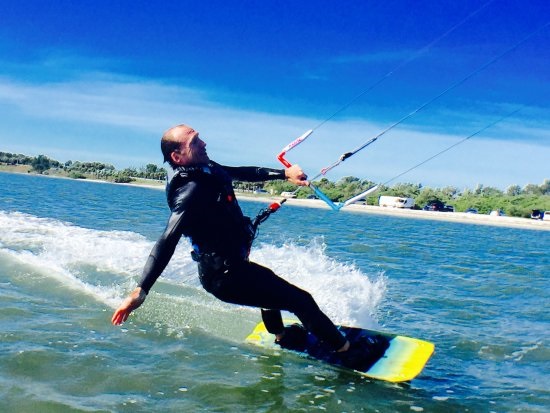We often overlook the pads regulations for our twin tip boards and lose a lot of their benefits.
These settings on the twin tip of our kiteboard seem to be required to adjust the size of the stance to make it more comfortable for our bodies.
While it is possible to partially believe that the five cms difference in the stance could be an accommodation, in reality this will only have a limited impact on your body position. This will have a greater impact on board stiffness and board behavior.
Modifications to the kiteboard’s flex are the main reasons for changes in your bindings position.
Different boards offer different flexibility. Fiberglass kiteboards have a greater flexibility than carbon-reinforced, and the same applies to thinner or thicker profiles.
This influences our purchase decisions regarding the lifestyle we want and how much weight we wish to maintain. We will be focusing on the effects of the stance we choose once we have it.
The stance alters the board’s flex behavior, as mentioned. This is important for two reasons:
- The riding style and conditions you prefer.
- The rider’s weight.
Many people buy the board with the default setting and use it every day without changing anything. They may complain about the board’s ‘bad’ qualities, which they could easily correct with a proper setup.
The foot straps’ position can have a dramatic impact on the board’s flex. The board’s response can be altered by changing the tip load and reducing the bending length. Each kiteboard’s internal flexing pattern is dependent on its thickness and the placement of the various reinforcing fibers (wood carbon, fiberglass, etc.) or the number of layers added to the core.
The flex is usually higher on the tips of a continuous rocker twin tip than it is on a 3-stage rockerboard. It decreases towards the middle. The stiffness is therefore concentrated in the middle and decreased at the tips.
Producers insert more complex flexing patterns, such as vflex zones, into the twin-tips to increase the torsion and improve carving and turnability. This is particularly true for freeride kiteboards. Wakestyle boards use very stiff torsion tips.
These flex properties of twin-tip boards are greatly affected by the position of the pads. The more that the footpads move towards the tips, then the board will have less flexibility and torsion.
This post was written by Aaron McClearnon, Owner of https://elitewatersports.com/. At Elite Watersports, We strive to provide exceptional service and genuine interactions with those interested in watersports. We hold dear our passion for being out on the water and maintain this as our foundation for all business practices.




